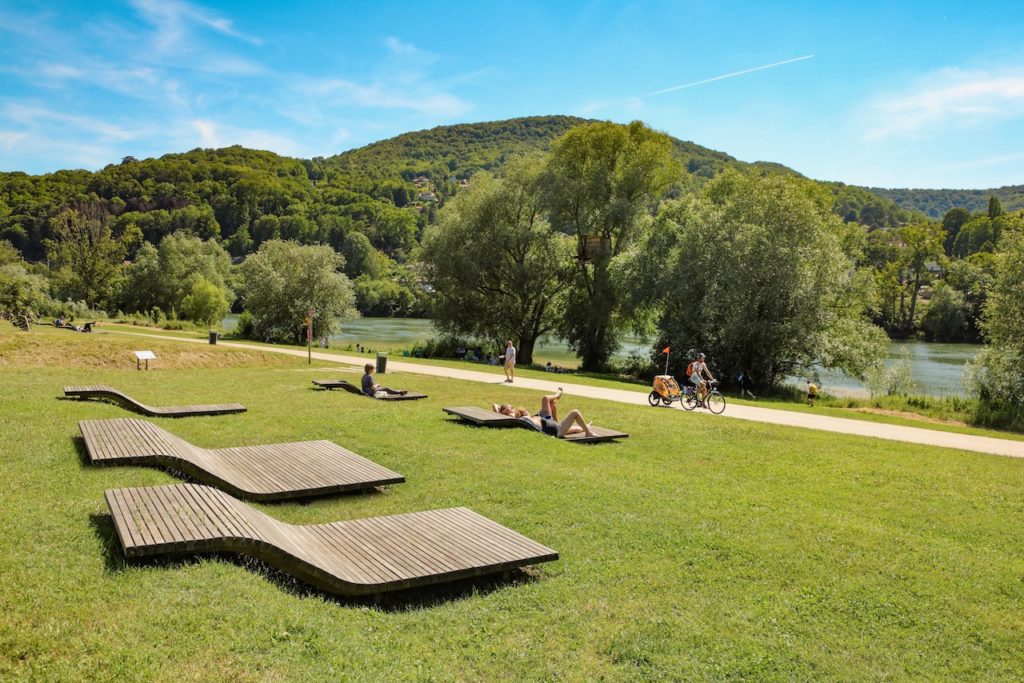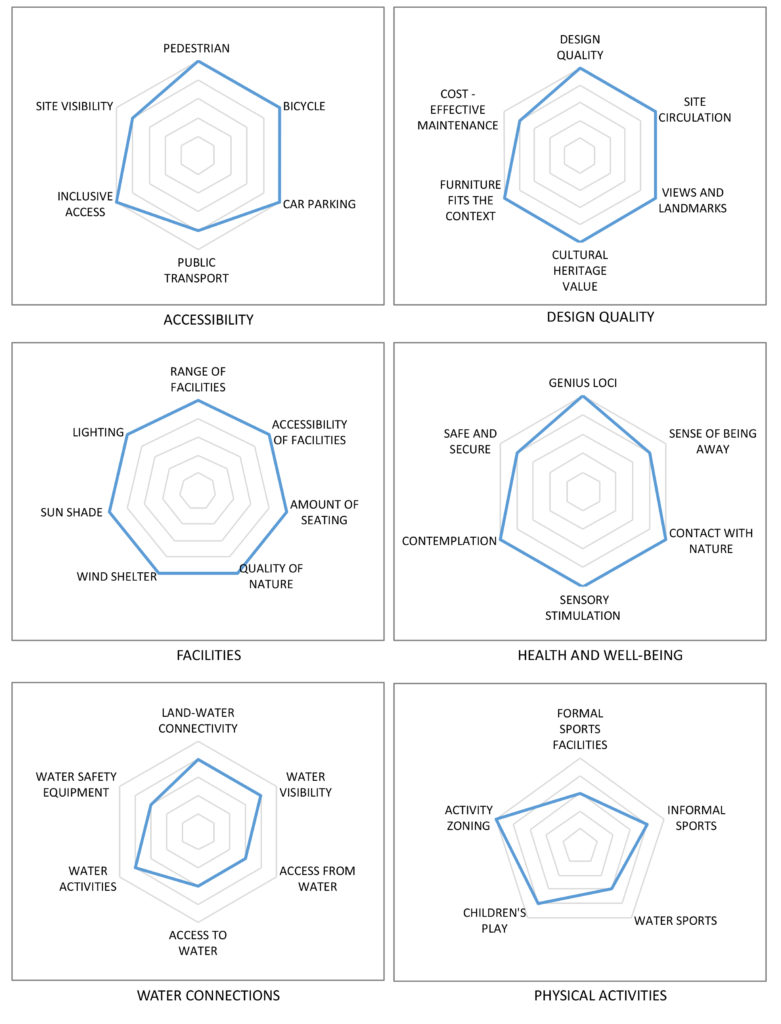
Architect
IN SITU Paysages
Urbanisme landscape architects
Type of Area
Large river with natural banks
Land/water interaction
Vegetated bank
Promenade
Terrace/steps
Built Environment Types
Low built
High green
Scale of Impact
District/Neighbourhood
City
Intervention Scale (Spatial)
Linear development – multiple interventions
Project Types
Riverfront development
Public space regeneration
Outdoor recreation
Urban/ Rural
Urban fringe
Visibility and Openness
Fully enclosed
Fully contained view
The River Movie: Creating spaces to view the river landscape
The banks of the Saône river at Rochetaillée sur Saône was planned and constructed in 2014 by an interdisciplinary team under the leadership of IN SITU Paysages & Urbanisme landscape architects. The team consisted of vegetation engineers, lighting designers and civil engineers. Following an international competition three years earlier, the project regenerated the old lost waterfront for the community. The landscape architects also collaborated with four contemporary artists, who created several installations on a route called the “river movie”. This is similar to a cinematic shot that continues into other sequences along the river. The artworks blend into the river landscape and are a reference to the local history and surrounding landscapes, creating places where visitors can stop to admire the Saône area.
Rochetaillée is a small commune located north of Lyon on the left bank of the Sâone river. The area of the River Sâone banks project is part of the strategic “Rive de Sâone project” initiated by the Lyon urban community. It is a fifteen kilometre long pedestrian promenade that has been developed in different stages between Lyon and the Saône Valley. This bigger project highlights and preserves the region’s ecological heritage, such as the façades of historical buildings built along the Saône, and relates to activities such as rowing, fishing, walking and children’s play. It alternates between the urban and pastoral atmospheres. Eventually the long pedestrian promenade changes into a more pastoral route where the local meadow vegetation forms the setting and the banks are widened to form wide beaches. This particular project is located along a two kilometre section and set in a six hectare expanse.
Originally, a towpath followed the banks of the Saône, where small barges were towed by horses. This was bordered by regularly flooded islands, which served as a grazing place for the village herds. These islands formed so-called “lônes”, diverse ecosystems formed by oxbow lakes or meanders separate from the main river. With the appearance of the Lyon tramway visitors came to the Saône waterfront in summer holidays and weekends for activities. Simple rustic taverns, known as “guinguettes” were built to offer fried foods and entertainment. Later, the river was canalised and the “lônes” were infilled to create land for roads. The swimmers left the banks, but the taverns stayed.
Due to recent sanitation efforts the river was revitalised, although swimming is still prohibited. The guinguettes are now popular restaurants, which line the new promenade along the former towpath. The promenade is divided into two lanes, one for light traffic and one for walking. This allows people to enjoy the connection to the river in different ways and at different speeds. The spaces provide a place for picnic tables and large lounging benches for relaxing and leisure. The design reinforced the damaged riverbanks and created a large meadow with natural views, punctuated by pebble and sandy beaches that gently descend towards the river e. Furthermore, it accommodates events, such as music concerts or movie screenings. An observation platform located at the floodgate was opened to the public in 2018 to observe the passage of boats.
Perception and Meaning
Legibility
Sense of place
Place attachment
Health and Wellbeing
Place affordance
Restorativeness
Aesthetic experience
Interaction with Water
Visual

Website of the project:
https://www.in-situ.fr/#/en/projects/berges-rives/rives-de-saone
Google map reference
The project is assessed well for accessibility in all aspects, because of its linear character, as it is both connected to the river and the main traffic lines. It offers an overall good design quality and it rates highly for all aspects regarding facilities. It has a strong genius loci and sufficient water connections, although there is less direct contact to the water since swimming is prohibited. The focus on physical activities is directed towards informal activities and children’s play. It is a good example to showcase the high status of French landscape architecture.
